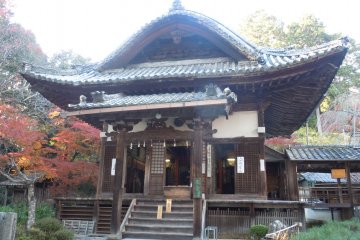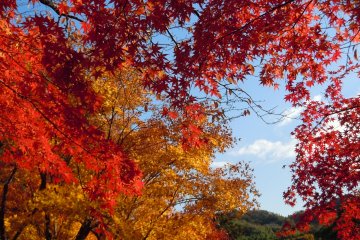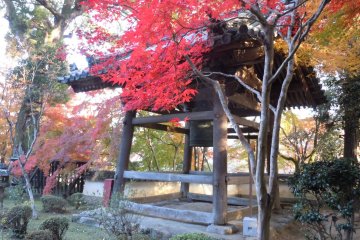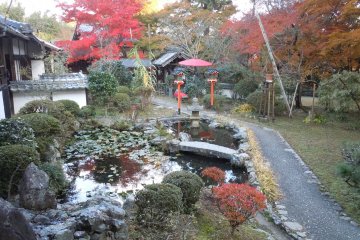Jurinji (十輪寺) is a small temple hidden away in the forests of Oharano above Kyoto, giving a taste of Japan’s beauty away from the crowds. It was built in 850 in the hope that Emperor Montoku’s wife can bear a child. This appeared to have worked and because of this some people visit this temple to pray for children or for an easy birth.
Jurinji became the last home for Ariwarano Narihira, who lived from 825-880, a well-known poet of the Heian period. So this temple is also called Narihira-dera (Narihira-temple). He was a romantic, skilled poet and said to be a protagonist of historical book “Ise Monogatari”. This temple is very quiet and tranquil, surrounded by the natural scenery of the Oharano district. It was an ideal place for Narihira to live his final years.
Later, the very powerful Fujiwara family, one of the families named in the Tale of Genji with connections to the Imperial Court, adopted this as their family temple. It was a great period for culture in Kyoto. Jurinji was burnt down during the Onin war, with the current Hondo or main hall dating from 1750. The main hall has a curbed roof which is rare for this type of temple.
Inside the temple, you can see Japanese paintings on fusuma paper sliding doors. Narihira and other aristocrats of the time are illustrated wearing colorful kimono and composing traditional Japanese poetry.
At the back of the temple there is a salt burning furnace. In the Heian period, it was fashionable amongst the upper class to burn salt water and enjoying looking at the smoke going up into the sky. It is said that Narihira burnt salt water thinking about his former lover Fujiwarano-Takaiko and sent his love to her by smoke soaring up into the sky.
The temple has two small gardens. The simple front garden has a pond, while the back garden, filled with rocks and pebbles, is said to be designed to mimic the seabed. Interestingly, inside the temple you can find colorful masks from Sri Lanka and photos of Sri Lankan monks. The priest of this temple had exchanges with monks from Sri Lanka. So they are memories of that time.
The temple is best visited in spring or autumn. In spring the old cherry blossom tree called Narihira-zakura (Narihira’s cherry tree) blooms beautifully besides the rock garden. If you visit there in autumn, you can enjoy colored leaves besides the temple building and the hills behind it
There are only a few places to eat around the temple, so it is a good idea to have lunch near the station before taking the bus. The cafes in the Aeon Mall Shopping Center is just two minutes walk north-west of Higashi Railway Station or 10 minutes from JR Mukomachi station, with take out or eat in lunch or snack menus. They also have a massage clinic, just in case you wish to relax there after the walk. Muko is on the main Kyoto railway line between Osaka and Kyoto, with trains every 10 minutes taking the 10 minute trip to Kyoto, whose modern station is a world away from the quiet charm of Muko.
Admission -400 yen
・Photography is permitted outside but not inside the temple building.
















